Gold Bar Worth $500,000 is Missing
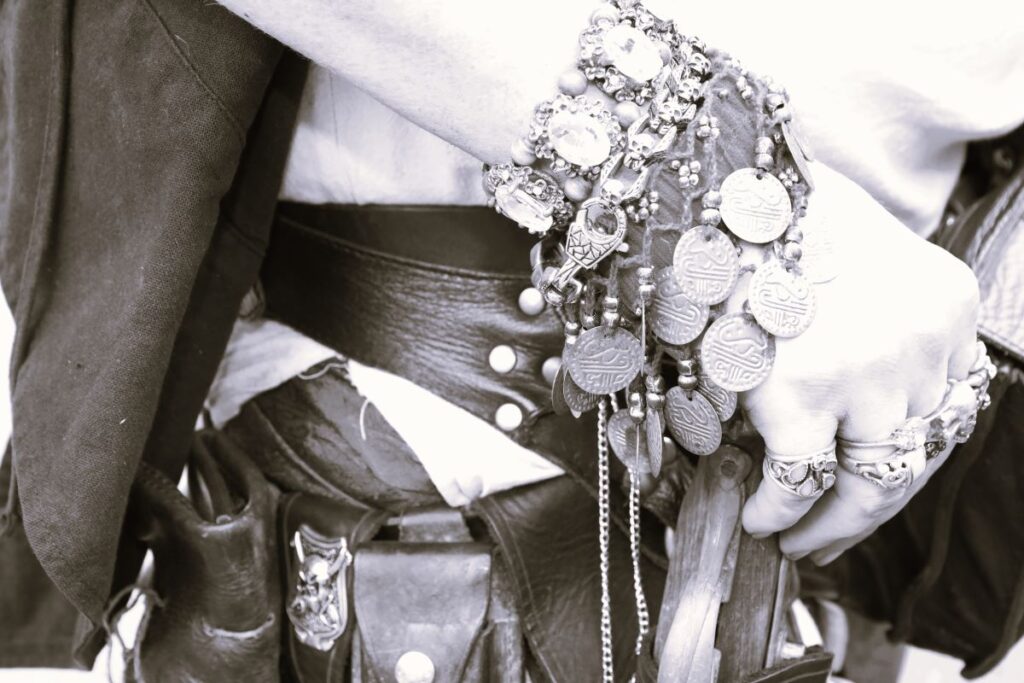
True In 2010, two men walked into the Mel Fisher Museum in Key West and stole a nearly 400-year-old gold bar worth more than half a million dollars. The crime garnered headlines across the country and employees of the museum were in shock. This is a tale of modern day piracy on an island long known for skirting the norms and weathering hurricanes. Finally, in 2018 one of the pirates was caught while the other soon endured a federal court. A small portion of the gold bar was recovered, according to court documents. But the fate of the entire bar remains a mystery. “I still hope it’s sitting on someone’s desk as a paperweight and we’ll still end up getting that gold bar back but I don’t know but there is still hope,” said an individual linked to the case. Mel Fisher and his treasure hunters discovered the gold bar on the ocean floor in 1980 about 25 miles off of Key West. This bar is part of the cargo lost while the Santa Margarita navigated the storm 1622. The ship was part of a fleet of 28 ships that had set sail from Havana on its way to Spain on September 4, 1622. A day later, a hurricane tore through the armada, sinking eight of the ships. The Discovery of The Santa Margarita When the discovery of the Santa Margarita unfolded, one of the recovered items enlisted Fisher’s fancy. A gold bar weighing nearly five pounds from a real shipwreck. Fisher decided to place the gold bar on display, constructing a special case in which visitors could reach in and hold the gold bar in their hand, even lift it up. But the designed of the case is to prevent anyone from taking it. At least that is what Mel thought about the design. Fisher wanted to give people that visited his museum an opportunity to touch a gold bar that had been on the sea floor for centuries. Lost and forgotten before Fisher started his venture, the bar mounted was a way for people to touch history. The bar presented as an item to hold was a success! That was, until August 2010, when these two men arrived just before closing time that day. One stood lookout, the other used some unknown device to break the case and remove the gold bar. The case, made out of thick “plexiglass or acrylic,” didn’t stop the thieves. I think it was for everybody that works here. I mean this was such an integral part of our museum and the experience of our visitors. And of course it’s just that sense of violation of how can they do this. It’s like why? Why!” The theft sent Key West into a tail spin. “A lot of rumors,” said Key West Mayor Craig Cates. “Was it an inside job? Where did these people come from? They have video of them how come they couldn’t catch them? How could they get out of town? Was it a boat? Private plane? Commercial car? We had no idea at the start.” The Mayor said folks in town wanted to know what happened to the gold bar. “We’re all worried the pirates melted down and sold just for the value of the gold which could bring $75,000,” he said. “But historic value is worth so much more. But who could buy it? Who would want to pay that much for it and know that it was stolen?” Last year, police got a tip which led them to Richard Steven Johnson and Jarred Goldman. Johnson confessed and pled guilty to federal charges earlier this year. Everyone in town is hoping the trial will reveal what happened to the gold bar. “It’s personal,” said Key West Police Chief Lee. “It’s personal for people at the museum, it’s personal for all the people at Mel Fishers, the treasure hunters and divers who risk their lives going down there to do this work. I think it’s personal for everyone. And we want that gold bar back. That’s our gold bar and we want it back.”
Bahama Shipwrecks Through Time

Have you’ve ever felt the allure of the sea and the mysteries it holds? Join us on an exciting journey as we dive into the fascinating world of Bahama shipwrecks. From lost galleons to hidden treasures, the Bahamas has it all. Each wreck tells a captivating story that spans centuries of maritime history. The Rich History of Bahama Shipwrecks The turquoise waters surrounding the Bahamas have witnessed countless ships meet their fate. Over the centuries, this part of the ocean earned the reputation as a graveyard of vessels. This area saw the passage of Spanish galleons laden with gold and pirate ships seeking hidden coves. Merchant vessels carrying goods from distant lands to sell in the Americas. Night time navigating the Bahamas was a problem. Vessel couldn’t tell the depth of water without modern day instruments. HMS Nancy One of the most famous wrecks is that of the “HMS Nancy.” A British warship sunk by American privateers during the Revolutionary War. The remains of the Nancy lie off the coast of Abaco, a testament to the region’s turbulent past. Discoveries Beneath the Waves Imagine the thrill of exploring these sunken time capsules! Marine archaeologists have uncovered a trove of artifacts from Bahama shipwrecks, ranging from cannonballs and navigational instruments to intricately crafted jewelry and coins. Each discovery offers a glimpse into the lives of sailors. If the passengers who once traversed these waters could only talk? The Wreck of the “La Galga” One of the most exciting finds was a cache of jewelry recovered from the wreck of La Galga, a Spanish ship lost in 1750 near Long Island. The pieces, now on display in Nassau, showcase exquisite craftsmanship and tell a poignant story of opulence lost beneath the waves. Much modern wreck than the that of the Atocha or the Maravillas, but some of the Jewelry recovered is still today viewed as masterpieces. Jewelry and Treasures from Bahama Shipwrecks For jewelry enthusiasts, the allure of shipwreck treasures goes beyond aesthetics. Shipwreck jewelry, with its unique provenance and historical significance, holds a special place in the hearts of collectors. Pieces adorned with pearls, emeralds, and gold evoke a sense of adventure and romance. Some of the stones cut at that time are true craftsmanship today. We actually had the privilege of holding a pendant recovered from the “Santa Margarita,” a Spanish galleon that sank off the Florida Keys in 1622. The pendant, adorned with a sparkling blue sapphire, felt like a connection to the past. A tangible link to a bygone era of exploration and trade, this is another wreck that was discovered by Mel Fisher. Adventure and Exploration If you’re eager to experience Bahama shipwrecks firsthand, you’re in for a treat! The Bahamas boast some of the world’s best wreck diving sites, offering a thrilling blend of history and underwater exploration. Sites like the SS Sapona, a concrete-hulled cargo ship wrecked during a hurricane in 1926 and this wreck still attracts divers of all skill levels. There are other locations to check out where and which dive company can accommodate you and your family in seeing an attraction as such Sunnodysseydivers.com. Safety is paramount when diving wrecks, so be sure to equip yourself with proper training and gear. I vividly remember my first descent to a wreck site—the adrenaline rush as I glimpsed the eerie silhouette of a ship emerging from the depths. With all of the coral and fish guarding a 200 year old wreck, seeing it will be a memory of a lifetime. Preserving Bahama Shipwrecks for Future Generations As we revel in the wonder of Bahama shipwrecks, it’s crucial to support conservation efforts that safeguard these underwater treasures. Marine ecosystems around wrecks are delicate and require responsible tourism practices to thrive. Organizations in the Bahamas Organizations like the Bahamas National Trust work tirelessly to protect wreck sites and promote sustainable diving. By respecting these historical sites and their marine inhabitants, we ensure that future generations can continue to uncover the untold stories hidden beneath the waves. Conclusion In closing, Bahama shipwrecks offer a captivating blend of history, adventure, and discovery. Whether you’re a jewelry connoisseur, an avid diver, or simply curious about the past, exploring these underwater time capsules is an experience like no other. Join me in embracing the allure of Bahama shipwrecks, and let’s continue to unlock the mysteries of our maritime heritage—one sunken treasure at a time. Happy exploring, and may your next dive be filled with fascinating tales from the deep!
The Role of Hernán Cortés in the Conquest of Mexico
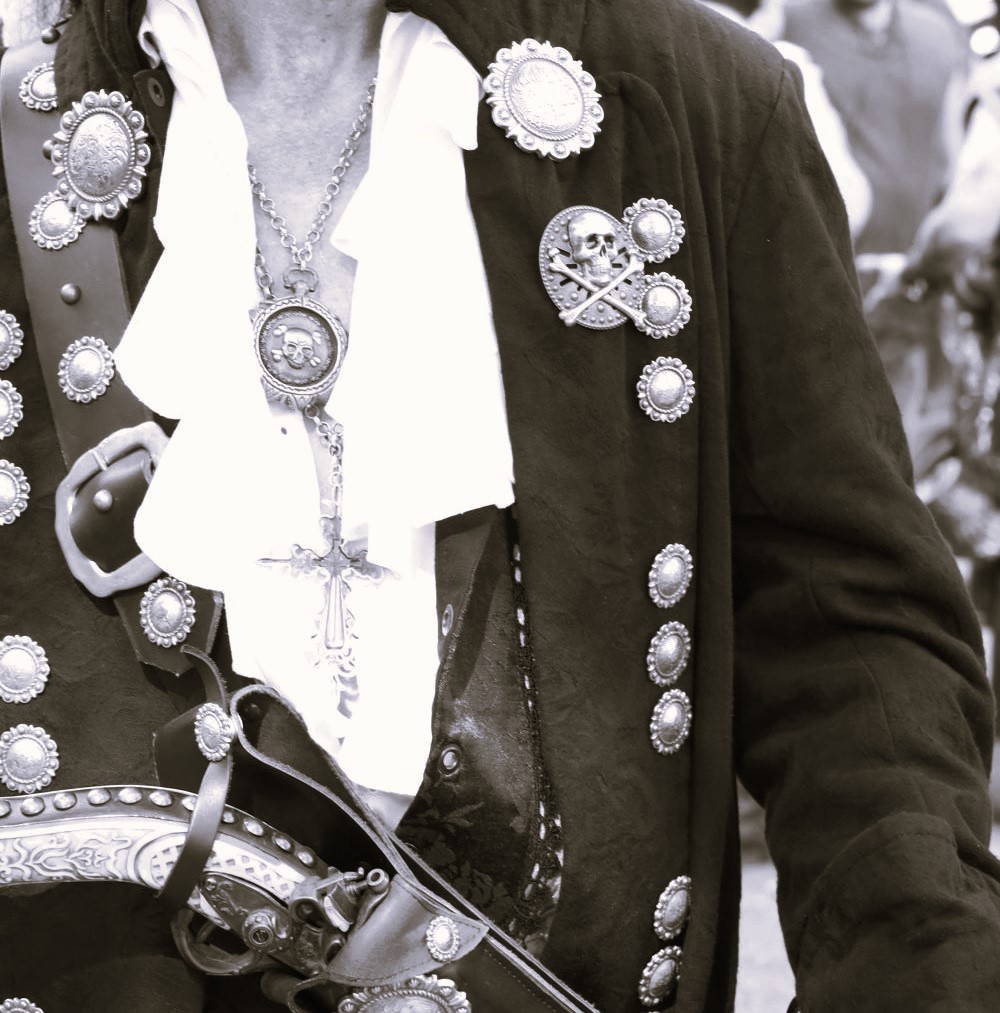
The Role of Hernán Cortés in the Conquest of Mexico. Have you ever held a piece of history in your hands? I’m not just talking about any old artifact. I’m talking about silver coins (and bars) minted in the New World during the 16th century, right around the time when Hernán Cortés was making waves in Mexico and long before the formation of America. Let’s dive into the fascinating story of Cortés and his pivotal role in the Spanish Conquest of Mexico, and how it ties into the allure of those ancient silver coins. Early Life and Ambitions To truly understand Hernán Cortés, we have to go back to his roots. Born in Medellín, Spain, in 1485, Cortés grew up in a time of great exploration and discovery. As a young man, he focused on the allure of the New World, filled with dreams of adventure, riches, and glory. Like many of his contemporaries, Cortés sought to make a name for himself and carve out a fortune in the uncharted lands across the ocean. Expedition to Mexico In 1519, Cortés embarked on his journey to Mexico with ambitious intentions. Landing on the Yucatán Peninsula, he encountered the indigenous peoples of the region and began his audacious conquest. Cortés was not just seeking to explore. The incredible wealth rumored to be in these lands—gold, silver, and other treasures that charged the European vision. Sailors of the Sea We are all fascinated by the bravery and determination of explorers like Cortés. Imagine sailing across the vast ocean into the unknown, driven by sheer ambition and curiosity. It was even thought, for a time, that such a voyage could chart a course to death and sail off the edge of the ocean into an abyss. Never to be seen again. It’s no wonder these men became legends of their time. Alliance and Confrontation Cortés was a master strategist, adept at forging alliances with indigenous groups who were discontent with Aztec rule. One of his key alliances was with the Tlaxcalans, who saw an opportunity to overthrow their powerful Aztec overlords. Together, they formed a formidable force against the Aztec Empire. The road to conquest was not without its challenges. Cortés faced fierce resistance from the Aztecs, led by the formidable Emperor Montezuma II. The clashes were intense, and each battle was a testament to Cortés’ tactical brilliance and determination to succeed against all odds. Capture of Tenochtitlan The turning point came in 1521 with the siege and ultimate fall of Tenochtitlan, the jewel of the Aztec Empire. Cortés orchestrated a relentless assault. The spoils of war were immense, including vast quantities of precious metals like silver. It’s incredible to think about the impact of these conquests on history. The weakening of Tenochtitlan not only established the end of an empire but also fortified the way for Spanish domination in the territory. Legacy and Impact Hernán Cortés’ conquest of Mexico had far-reaching consequences. The influx of wealth from the New World , including silver mined from regions like Zacatecas and Potosí, fueled the rise of the Spanish Empire. Silver became a crucial component of global trade, circulating through networks that spanned continents. Many of the silver Reales made in the New World even made their way to Asia. The legacy of Cortés is a complex one. Celebrated in some circles as a daring explorer and conqueror. Others view him as a symbol of European imperialism and the devastating impact it had on indigenous cultures. Silver Coins of the New World Now, let’s talk about those intriguing silver coins. In the wake of Cortés’ conquest, Mexico became a major center for silver production. The Spanish minted coins from the rich veins discovered in places like Taxco and Guanajuato. These coins not only served as currency but also translated the story of Cortés’ conquest into the unspoiled lands. The transformation of the New World expanded the Old World’s momentum. One of the most coveted items today from the New World is one of the silver bars from a 1522 shipwreck off Little Bahama Cay. Today, known as the “Tumbaga” shipwreck, bars of silver melted as quick as possible loaded on a ship. Not much information is known about the wreck returning to the Old World from Mexico. The items found from the wreck is one of the few existing items that show a tangible link to the era of Cortés and the Spanish conquest. Only about 200 of these artifacts were found below the “Nuestra Señora de las Maravillas (1656)” shipwreck. Very rare bars! And if the bars could talk, they would reveal an unbelievably history of how the bars were made. One could only guess if the mix of “silver, gold, and copper combined bars” came from an Aztec warrior, or from the mines of Mexico? Conclusion Hernán Cortés played revealing role in the Spanish conquest of Mexico, forever altering the course of history. His quest for wealth and power unleashed a chain of events that shaped the New World and left an indelible mark on global commerce. As we reflect on Cortés’ legacy, let’s also appreciate the tangible artifacts that connect us to this remarkable era. Whether it’s a silver coin, silver bar, or a piece of pottery, each artifact tells a story—a story of ambition, conquest, and the enduring quest for knowledge and wealth. Embracing History The next time you see a silver coin (or bar) from the New World, take a moment to ponder its origins. It’s not just currency; it’s a piece of living history—a testament to the bold explorers and conquerors who dared to venture into the unknown. We hope this journey into the role of Hernán Cortés has sparked your curiosity about the past. As we delve into the stories of those who came before us, we gain a deeper appreciation for the tapestry
Florida’s Shipwreck Havens and Underwater Treasures
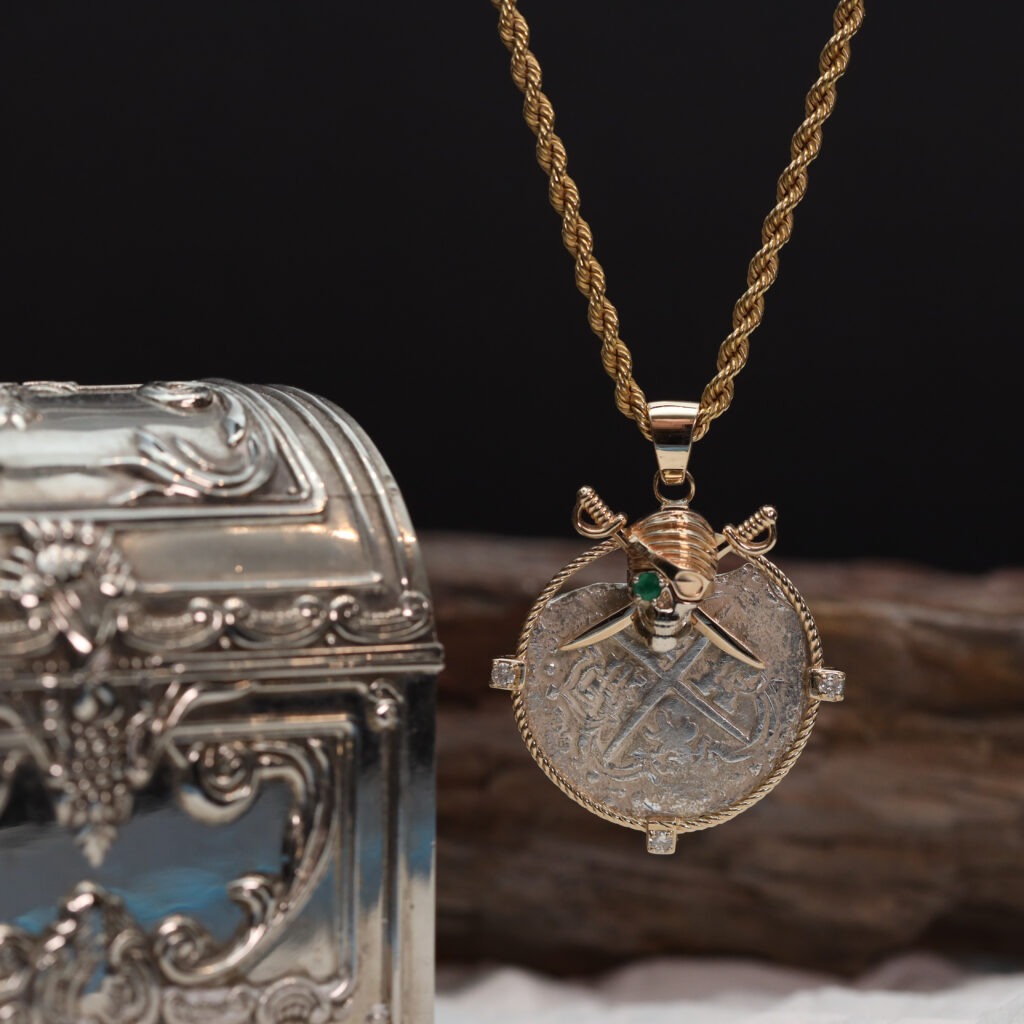
Let’s set sail and explore why Florida’s geography has made it a haven for underwater discoveries and captivating shipwreck jewelry. The Intriguing Coastline: More than Just Beaches When you think of Florida, images of pristine beaches and swaying palms likely come to mind. Stretching over 1,300 miles along both the Atlantic Ocean and the Gulf of Mexico. Florida boasts one of the longest coastlines in the United States. The “Sunshine State” has long been admired for it’s beautiful beaches and tropical foliage. The coastline isn’t just about sandy shores; it’s a mosaic of diverse environments. The sugary-white beaches of the Panhandle to the tip of Key West, Florida’s geography is a sailor’s dream. These varied coastal features create a labyrinth of navigational challenges that have confounded sailors for centuries. The Gulf Stream’s Mysterious Pull The magic of the Gulf Stream—a mighty ocean current that courses near Florida’s coast, like a hidden river beneath the waves. This powerful current, with its warm waters and swift currents, has been both a blessing and a curse for sailors. Many sailing adventures from Columbus to present day have felt the tug of the Gulf Stream’s currents, which can sometimes alter an intended course and edge a ship closer to the shallows and hazardous reefs near the coast. The Gulf Stream has historically influenced maritime routes, often inadvertently guiding ships towards Florida’s shores. If the Captain of a sailing ship didn’t pay close attention to the position of his ship, hidden sand bars could spell the deadly end of his voyage. This natural phenomenon has undoubtedly contributed to the number of shipwrecks along the Florida coastline, creating intriguing opportunities for underwater exploration. Coral Reefs and Underwater Terrain: Nature’s Shipwreck Magnets Florida’s underwater landscape is a patchwork of coral reefs, rocky outcrops, and shallow waters. The Florida Keys are renowned for their vibrant coral reefs and teeming marine life. These stunning reefs have not only attracted divers and snorkelers but have also served as treacherous obstacles for ships navigating the coastline. As any lover of marine life, people have marveled at the intricate ecosystems that thrive beneath Florida’s waves. These very same reefs and underwater terrains have contributed to numerous shipwrecks throughout history. It is these wrecks that created a treasure trove of artifacts and stories waiting to be discovered. Historical Maritime Routes: Tracing the Paths of Explorers Florida’s maritime history is steeped in the tales of explorers and traders who charted the seas in search of new lands and riches. During the Age of Exploration, Florida’s coastline served as a vital waypoint for European explorers venturing into the New World. From Columbus to modern day pirates and smugglers, an untold number of vessels can be traced all the way back to 1498. If you can, imagine the thrill and excitement experienced by these early sailors as they navigated uncharted waters? Weather Patterns and Storms: Nature’s Unpredictable Fury Living in Florida, one quickly learns to respect the power of nature, especially during hurricane season. Sudden storms and rough seas have long been hazards for sailors, posing significant risks to ships and their crews. The sudden onset of a thunderstorm can turn calm waters into a tempestuous sea and end a normal sail boat excursion. These weather patterns have undoubtedly played a role in shaping Florida’s shipwreck history, adding an element of drama and danger to the maritime narrative. Underwater Treasures and Shipwreck Jewelry: A Link to the Past Now, let’s talk about the real treasure—shipwreck jewelry. For those who appreciate history and the allure of lost treasures, shipwreck jewelry holds a special fascination. Each piece of jewelry salvaged from a shipwreck tells a story—a story of adventure, tragedy, and resilience. Imagine owning a pendant or ring that once belonged to a seafaring explorer or a merchant sailing the high seas. Shipwreck jewelry connects us to the past in a tangible and meaningful way, making it a prized possession for collectors and history enthusiasts alike. Appeal to the Jewelry Enthusiast: Finding Your Own Piece of History If you’re considering acquiring shipwreck jewelry, you’re not just buying a beautiful piece; you’re acquiring a slice of maritime history. From coins and gemstones to intricate artifacts recovered from the depths, shipwreck jewelry offers a unique window into the past. Most collectors of shipwreck artifacts have no idea about the 8 Reale. The 8 Reale was the full salary of an average sailor. Click Below to See the Adventure: Shipwrecks of Florida and the Jewelry Below A few details you might want to research when traveling to Florida. As of the date of publishing this document, the State of Florida has a set of rules when it comes to treasure of the ocean. Anyone without a permit may walk the beach with a metal detector and unearth treasure. It is yours to keep. Once in the water, you are required by law to apply for a permit from the State of Florida to retrieve any treasure or artifacts. When it comes to shipwreck artifacts, we would encourage you to explore the fascinating world of underwater treasures. Nothing can match the feeling when you find a $100 bill in the mall. Finding a 4 or 8 Reale on a beach is priceless. In conclusion, Florida’s geography is more than just a backdrop for beach vacations—it’s a dynamic canvas that has shaped the course of maritime history. From the mysterious pull of the Gulf Stream to the treacherous reefs and historical trade routes, every aspect of Florida’s geography has left its mark on the underwater world. So, what are you waiting for? Embark on your own adventure, and who knows? After violent storms on both the East and West coast of Florida, she will sometimes give up a few of her coins or pieces of jewelry from long ago. It still happens to this day. Fair winds and following seas!
What Is a “Piece of Eight” Coin?
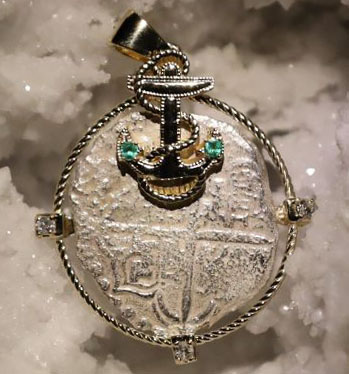
Explore the intriguing history of the “Piece of Eight,” a global currency from the Age of Exploration, its impact on trade, culture, and its enduring legacy today.
What Is So Special About The Atocha Shipwreck?
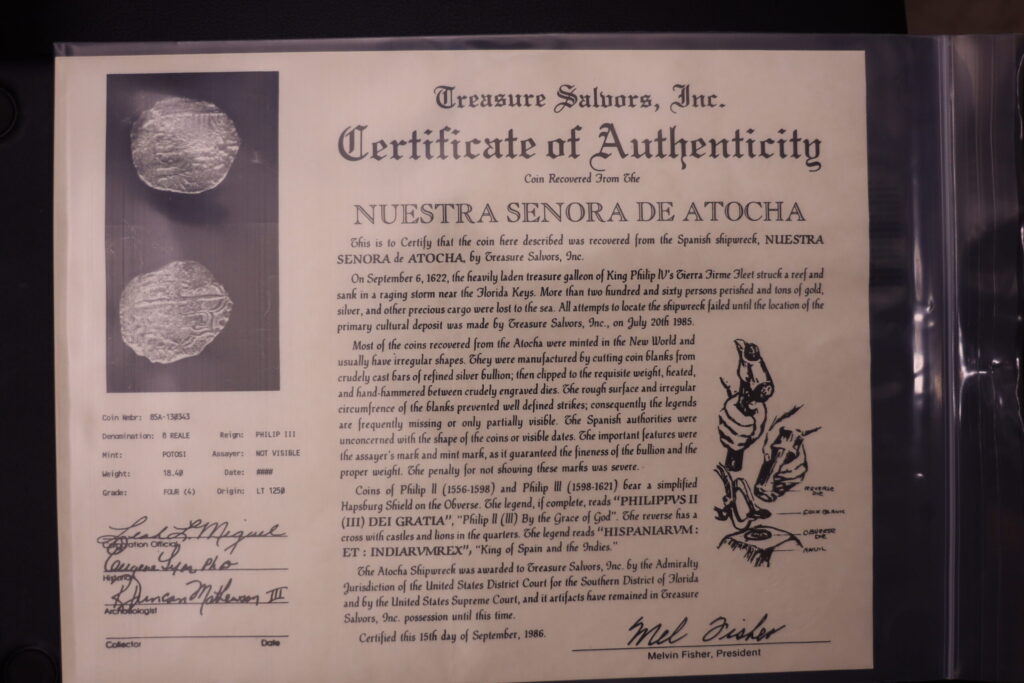
What sets Nuestra Señora de Atocha apart is the fact that it holds a staggering 40 tons of gold and silver, with approximately 70 pounds of Colombian emeralds. Some of these gems are renowned for being the most exquisite and valuable in the entire world. Even it took almost two months to load all the cargo onto the Atocha. The Atocha was a Spanish treasure galleon that sank off the coast of Florida, near the Florida Keys, in 1622. It was part of a fleet returning to Spain from the Americas when it was attacked by a hurricane and sank. The wreck of the Atocha remained undiscovered for over 300 years until it was found by the American treasure hunter Mel Fisher and his team in 1985. The discovery was a significant event in the world of maritime archaeology and treasure hunting. The Atocha’s cargo is estimated to be worth hundreds of millions of dollars. The treasure includes gold and silver bars, coins, jewelry, and various artifacts. However, there were legal battles and controversies surrounding the ownership and distribution of Atocha’s treasure. This also was a notable discovery itself. The Atocha’s artifacts are now housed in museums, and some are in private collections. The story of Atocha continues to capture the imagination of people around the world, which is what makes it so special. The Atocha shipwreck is renowned for several reasons, Valuable Cargo For the return voyage in 1622, Atocha was filled with a cargo that is nearly unbelievable today. This is another reason why Atocha is considered more special than others. In 1038 ingots, there were 24 tons of silver bullion, along with 180,00 pesos of silver coins, 582 copper ingots, 125 gold bars and discs, 350 chests of indigo, 525 bales of tobacco, 20 bronze cannon, and 1,200 pounds of worked silverware. “The Atocha Motherlode” is a treasure worth around $450 million. It was found with 40 tons of gold and silver. It contained 114,000 Spanish silver coins, gold and silver artifacts, gold coins, Colombian emeralds, and 1000 silver ingots. Historical Significance Atocha ship has a historical significance. It was one of the most famous ships of the Spanish treasure fleet. During the 16th and 17th this ship transported immense wealth from the colonies in the New World back to Spain. These fleets played a significant role in the economic system of the Spanish Empire. They enriched Spain and fueled its dominance in Europe during that era. Additionally, items such as unregistered jewelry and personal belongings were being smuggled to evade taxes. The Atocha met its tragic fate in 1622 when it sank off the coast of Florida during a hurricane. One notable point is on her first trip to Spain, her mainmast got damaged and had to be changed. However, the wreck and its treasures remained lost for over three centuries. Guinness Book of World Records Nuestra Señora de Atocha is one of the most significant maritime discoveries in history. The Atocha made its way into the Guinness Book of World Records in 2014 for being the most precious shipwreck ever salvaged. This makes this shipwreck different from most ships submerged in the sea and carrying millions of valuable assets. Treasure Recovery After 300 Years Mel Fisher is a renowned American treasure hunter. He led the most famous and successful expedition to locate and recover the treasures of the Atocha. The treasures remained unseen by human eyes until Fisher began uncovering pieces of the valuable cargo in 1971. It took years of relentless searching. In 1985, Fisher and his team finally found the wreck site. This discovery was a remarkable feat that captured global attention. Fisher and his crew unearthed the ultimate treasure trove of the Atocha. For sixteen and a half years, they combed the seabed in search of the Nuestra Señora de Atocha. Tragically, six years into the search, Mel Fisher suffered the loss of his eldest son, Dirk, Dirk’s wife, Angel, and crew member Rick Gage in a devastating accident. Despite the hardships, Mel Fisher made the biggest contribution to the recovery of the Atocha’s treasures. Legal Precedent After the discovery of Atocha, the court battle between Mel Fisher and the Government of Florida makes this shipwreck another widely discussed matter in history. There was a lengthy court battle. This case set a precedent for the rights of treasurehunters. When Fisher lost his family members, the government turned a blind eye. But as soon as he started uncovering pieces of Atocha’s treasure, they swooped in and claimed it all! After years of legal battles, the U.S. Supreme Court finally ruled in Fisher’s favor on July 1, 1982. Despite the difficulties, Fisher and his crew fought with strong determination. Then, on July 20, 1985, exactly ten years after the Northwind tragedy, Mel Fisher’s perseverance paid off! They discovered the “mother lode” of Atocha’s treasure. It is valued at over $400 million. The court demanded that 25 percent be given to the State of Florida, while Fisher and his supporters could keep the rest. Scientific Research After Atocha was discovered, it became a treasure of information for archaeologists and historians. During the 17th century, they started exploring ship construction techniques, navigation practices, and maritime trade routes. Also, the artifacts recovered from the wreck have been studied extensively. These studies shed light on various aspects of Spanish colonial history. These artifacts provide insights into the daily life, trade networks, and religious practices of the Spanish colonial period. Verdict The Atocha Shipwreck stands out due to its incredible riches, the way it went down, and its recovery centuries later. Mel Fisher played a significant role in uncovering the Atocha’s treasures, even battling the government in the process. This find not only unearthed millions in wealth but also provided valuable insights for historians and archaeologists. Finally, it won the Guinness Book of World Records. Even today, people are fascinated by Atocha and wonder about its wealth and long history.
Is Treasure from a Shipwreck Cursed?

Shipwrecks, shrouded in mystery, often carry tales of cursed treasures. Stories of ocean-seated voyages and haunted loot have surfaced from the ocean’s depths, captivating the imagination. But is there truth to these legends, or are they mere myths? Here, you can explore the enigmatic allure of shipwreck treasures and the supposed curses they bear. Historical Shipwrecks and Their Treasures Throughout history, the ocean floor has become the final resting place for countless ships. Some of which carried treasures beyond measure. These shipwrecks, often discovered after centuries, continue to intrigue us with their stories and the myths of curses that surround them. Here are some historical shipwrecks. These shipwrecks are not just archaeological sites but narratives of human ambition, tragedy, and the eternal allure of hidden wealth. The curses associated with these treasures speak to our collective fascination with the unknown and the price of human greed. The stories about shipwrecks and their treasures are already enthralling; whether these curses are real or just products of our imagination, they take on a mysterious quality. The Allure of Cursed Treasures The notion of cursed treasures taps into the human fascination with the unknown and the thrill of danger—it’s a blend of history, mystery, and the supernatural that creates a compelling narrative. These stories, for their dramatic elements and the psychological thrill they provide, are still acknowledged today. They challenge our understanding of reality and offer a glimpse into a world where the supernatural influences the material. The idea that an object can carry a legacy, a story, or a curse across centuries captivates our imagination, making us ponder the limits of our knowledge and the possibilities beyond the physical world we understand. These tales endure because they offer an exciting mix of fact and folklore. These also leave us to wonder about the true power of the hidden treasures beneath the waves. To learn more on Pirates and shipwrecks, Click to watch Video: Pirates and the Superstitions of Maritime Sailing Psychological Perspective The belief in cursed treasures is rooted in psychology. It reflects our innate tendency to seek explanations for the unexplained and to attribute misfortune to external forces. This cognitive bias, illusory correlation, leads us to connect unrelated events, like finding treasure and subsequent bad luck, creating a curse narrative. It’s A way to make sense of random occurrences and impose order on chaos, revealing more about the human psyche than the supernatural. The Reality Behind the Curses Although many stories of cursed shipwreck treasures exist, most real-life events linked to these curses are coincidental or anecdotal. For example, some treasure hunters have had bad luck after disturbing submerged treasures; nevertheless, there is no factual evidence to substantiate assertions of supernatural origins in these cases. Psychologists explain that the human mind is prone to finding patterns and linking events, even without a causal relationship. This phenomenon, apophenia, is still common today. Moreover, the idea of a curse can be psychologically powerful. It can lead individuals to attribute unrelated misfortunes to a supposed hex. Historical analysis also debunks many curse myths. For example, the so-called “curse of the pharaohs” associated with Egyptian tombs is a sensationalized narrative, with no statistical increase in deaths or accidents among those who entered the tombs. Even though the idea of cursed goods makes for fascinating tales, these myths are but that—myths. Rather than being true accounts of supernatural events, they function as cautionary stories that mirror our anxieties and moral principles. The actual “user” might be the propensity of humans to construct these kinds of stories around the unsolved riddles of our past. Conclusion Ultimately, the curse of shipwreck treasures is a myth. These stories, while enthralling, are born from human imagination and our desire to find meaning in the unexplained. They serve as a testament to our fascination with history and the supernatural, reminding us that sometimes, the real treasure is the tale itself.
Unveiling the Depths: The Untold History of the Maravillas Shipwreck
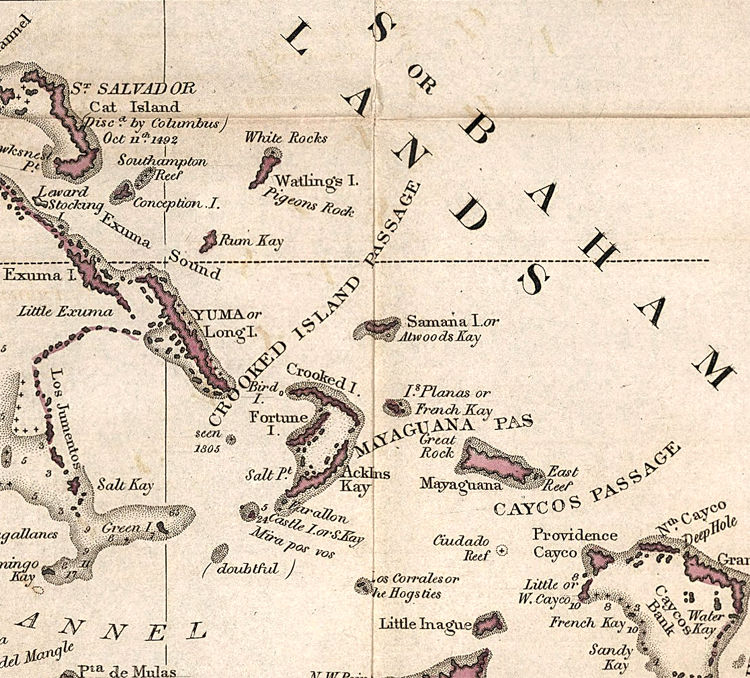
Today, we’re embarking on a thrilling journey into the captivating history of the Maravillas shipwreck—a story that’s as tragic as it is intriguing, and one that holds special significance for those who appreciate the allure of treasure from the bottom of the ocean. We will dive deep into the depths of maritime history and uncover the mysteries of this legendary Spanish galleon. Setting Sail: The Voyage of the Maravillas Imagine yourself back in the 17th century, a time when the vast expanse of the ocean beckoned with promises of adventure and untold riches. The Maravillas, a majestic Spanish galleon, set sail from the shores of the New World, brimming with treasures destined for the courts of Spain. Gold, silver, sparkling gems, and exotic goods filled its holds, a testament to the wealth and bounty of distant lands. Anyone that has traveled to an ocean have been fascinated by tales of seafaring voyages during the age of exploration. The courage and determination of those who sailed these treacherous waters, facing unknown dangers at every turn, truly inspire a sense of awe. The Tragic Turn: Events Leading to the Sinking As fate would have it, the journey of the Maravillas took a tragic turn. Caught in the grip of a fierce storm off the coast of Florida, the once-proud galleon succumbed to the accidental collision between another ship and to the relentless power of the sea. It’s a sobering reminder of the perils faced by sailors in those turbulent times. Lost Riches: Treasures of the Maravillas What treasures lie hidden beneath the waves, lost to the depths of history? The cargo of the Maravillas was a true treasure trove of riches—a fortune in gold and silver, gemstones from distant lands, and exotic goods that once adorned the courts of kings. The thought of these precious artifacts lying on the ocean floor, untouched for centuries, is both poignant and thrilling. Each piece tells a story of trade and exploration, a testament to the interconnectedness of civilizations across the seas. Discovery and Salvage Efforts Fast forward to modern times, where the mysteries of the Maravillas are slowly being unraveled. The discovery of the wreckage sparked a flurry of salvage efforts, with divers and archaeologists using cutting-edge technology to explore the sunken remains. At that period of finding shipwrecks, the introduction of the magnetometer would be a game changer for the Salvage Company, Marex. The location where Marex had actually found the Maravillas was the same location where they started weeks before. The problem was, a later shipwreck had actually hit the same reef where the Maravillas lay, confusing the salvagers. Many stories about the contents aboard the Maravillas would become the stuff of legend. And yet still, much of the Maravillas is still undiscovered. The Legacy of the Maravillas The legacy of the Maravillas lives on in the annals of maritime history. Its sinking not only marked a tragic chapter in seafaring lore but also spurred advancements in underwater archaeology and exploration. Today, the Bahamian govt. has officially given permission to another company to explore the wreck and are supposedly salvaging the contents of the location where the Maravillas lay. Embracing the Adventure As we conclude our journey into the history of the Maravillas shipwreck, we’re reminded of the profound connection between humanity and the sea. The ocean holds both beauty and mystery, and exploring its depths—whether through tales of sunken galleons or personal dives—offers a glimpse into a world unlike any other. For those who share a passion for this beautiful jewelry, the stories behind these treasures add an extra layer of fascination. Each piece recovered from the Maravillas is a link to our shared past, a tangible reminder of the journeys taken by those who came before us. Closing Thoughts So, dear readers, as we bid farewell to the Maravillas and its intriguing tale, let us carry forward the spirit of exploration and discovery. Whether you’re admiring a sparkling gemstone or dreaming of far-off shores, remember that the ocean holds endless possibilities—both in its depths and in the stories it has yet to reveal.
